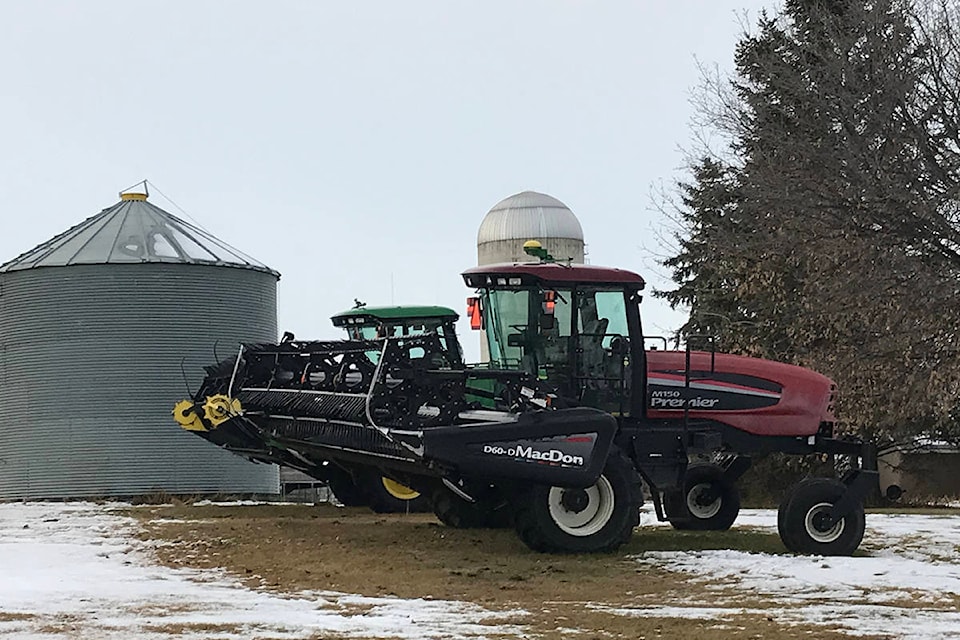Back-to-back early blasts of winter are testing central Alberta farmers again.
“There’s still crop out there,” said Mike Ammeter, who farms near Sylvan Lake. “It’s been a tough harvest again.
“Last year, was tough and it’s not a good one again. The producers who are done, I would say they are in the minority, for sure.
“Myself, I need another day and a half. Others need a week or better.”
In 2018, farmers wrestled with dry conditions and then were hit by snow that fell on and off throughout all of September and half of October.
“This year, it was kind of a cool summer, and kind of wet, and it delayed crop maturity,” said Ammeter, who is a director on Alberta Canola.
“I don’t know how many times we had snow in September and October. It’s about four, I think.
“After a while, you get kind of numb and just stop counting,” he said with a chuckle.
At a conference this week in Red Deer hosted by Team Alberta, which represents Alberta Barley, Alberta Canola, Alberta Pulse Growers and the Alberta Wheat Commission, Agriculture Minister Devin Dreeshen estimated crop losses could top $700 million.
The latest Alberta Crop Report, which provides an update as of Tuesday, said about 90 per cent of canola had been harvested in the central region. Other crops are in a similar range, except flax, which was at 70 per cent.
About 92 per cent of crops are in the bin, compared with 96 per cent at the same time last year. In 2016, only 70 per cent of crops were in the bin.
The snow has brought harvesting to a halt for the season, says the report.
Poor harvest conditions have been devastating for Peace region farmers, northwest of Edmonton. Only about 62 per cent of wheat, 55 per cent of barley and 60 per cent of canola have been harvested.
Prices have been another challenge for canola farmers this year, said Ammeter. A Chinese ban on Canadian canola cut off a large market and depressed prices that have yet to bounce back.
Ammeter said a lot of farmers will now sit on their crops until next spring.
“We’ll wait. You’ll see the combines flying around in late April or early May.
“We’ll have some losses and some degradation, but it’s still harvestable in the spring. I don’t see why it won’t be.”
Ammeter said farmers have learned to be optimistic, and this year is no different.
pcowley@reddeeradvocate.com
Like us on Facebook and follow us on Twitter
